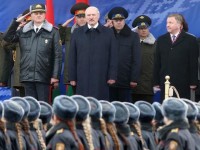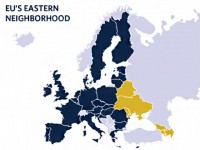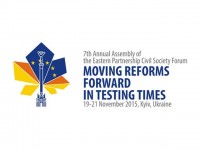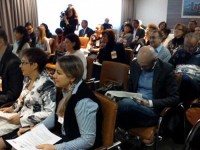Minsk’s muddled media clampdown could jeopardize warming of relations with the West.
West invested $700 million into Belarus’ democratization over 5 years

Most of the money went to the state or international implementors and not to "the fifth column" inside Belarus, according to independent report.
“A tenth of the money was spent directly on the civil society,” says Andrei Yahorau who co-authored the analysis of EU donor suppor. “The state or organizations close to the state received 30% of the money.”
The rest was spent both on the state and the civil society in 2006-2010, Mr Yahorau claims. But this was done in a strange way.
Andrei Yahorau: “Most of the money (donor support for Belarus. — Euroradio’s note) is used by international institutions to cover the expenses of the countries and institutions in EU member states that use the money for Belarus.”
There are also intermeditories to channel the money through before financing the projects. Does it mean that most of the “Belarusan” money does not even reach Belarus?!
Andrei Yahorau: “Most of the money does not even cross the Belarusan border. Only 30% of the resources can reach Belarus.”
It means that...
Andrei Yahorau: “The Belarusan state and international mediums receive most of the money. The Belarusian opposition and civil society get much less.”
Mr Yahorau reckons that statements by Belarusan officials “crazy financing” funding for the Belarusan opposition are groundless, Yahorau claimed.
The analysis made by experts of the Centre for European Transformation does not show who received the money in Belarus and for what projects. The European documents they worked with do not show it either. But they show that donors started allocating... less money on human rights protection after 2010.
Andrei Yahorau: “Part of the money was spent on supporting democratic institutions directly. The money still exists but it was allocated to another target group. This is strange.”
It is also surprising that the former main donors of “democratization processes in Belarus” reduced financing after 2010 while others increased it. Sweden has replaced Germany and Poland. However, this is not a relay.
Andrei Yahorau: “Sweden is gradually developing its civil society assistance. It is expanding the channels used for this assistance through the civil society. Germany is focused on the things needed in the process of the country’s modernization and evolution and chooses state and transparent channels for money allocation.”
Some of “the channels” were blocked by the Belarusan authorities after the Square and the reaction of the West to it. Germany refused from some of them too — it was decided that their usage was unethical.
There is no information about the money the West spent on Belarus last year. However, we will probably see a change there: the state will receive less and the civil society — more, Euroradio’s interlocutor thinks. But how much money hasn’t reached Belarus?
Others
-
In Belarus, a rising fear: Will we be the next Ukraine?
The relationship between Russia and Belarus has never been an easy one. The two former Soviet republics have spent the last two decades on a roller coaster ride — sometimes allies, sometimes adversaries in heated public rows.
-
The EU’s Benign Neglect of Eastern Europe
Between November 6 and December 11, 2015, Carnegie Europe continued its Capitals Series. In this second phase, the focus was on the EU’s Eastern neighbors, which the bloc has so often zigzagged over in trying to establish a coherent policy toward them collectively or bilaterally.
-
New ENP and Civil Society’s Role in Focus of the 7th EaP CSF Annual Assembly (Photo)
The 7th Annual Assembly of the Eastern Partnership Civil Society Forum was held in Kyiv on 19-21 November attracting around 300 participants, observers and guests who attended more than 20 sessions and a Networking Fair in the framework of the Assembly.
-
Is social economy a phenomenon for Belarus?
The conference “Social economy: how to be successful despite the crisis” launched in Minsk on October 22.








Comments
From farewell to a new Eastern policy and towards a new development
Poland and Germany were both initiators and drivers of a New Eastern policy linked to the Eastern neighborhood and Russia/Soviet Union.